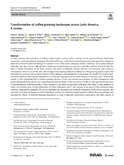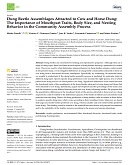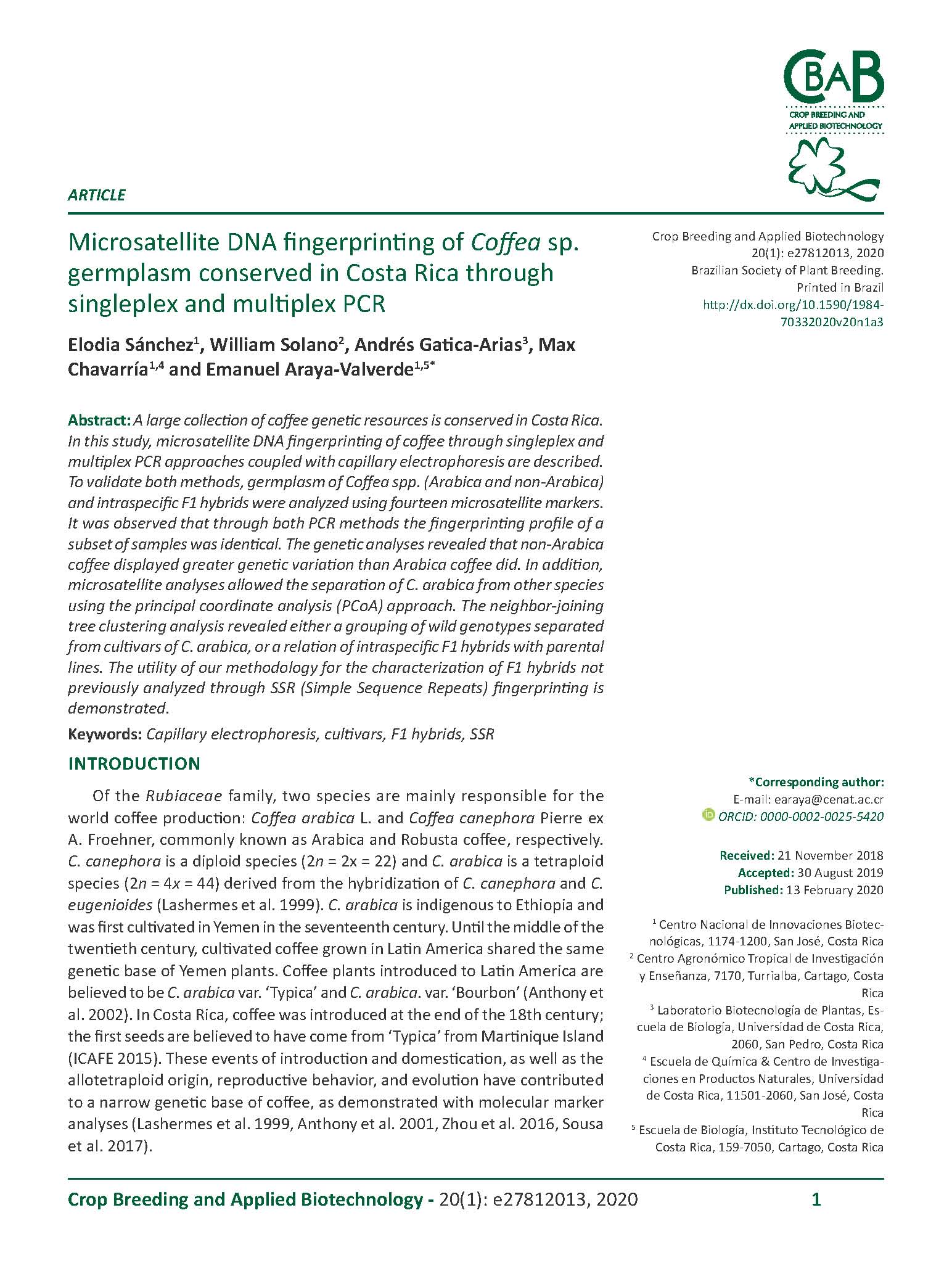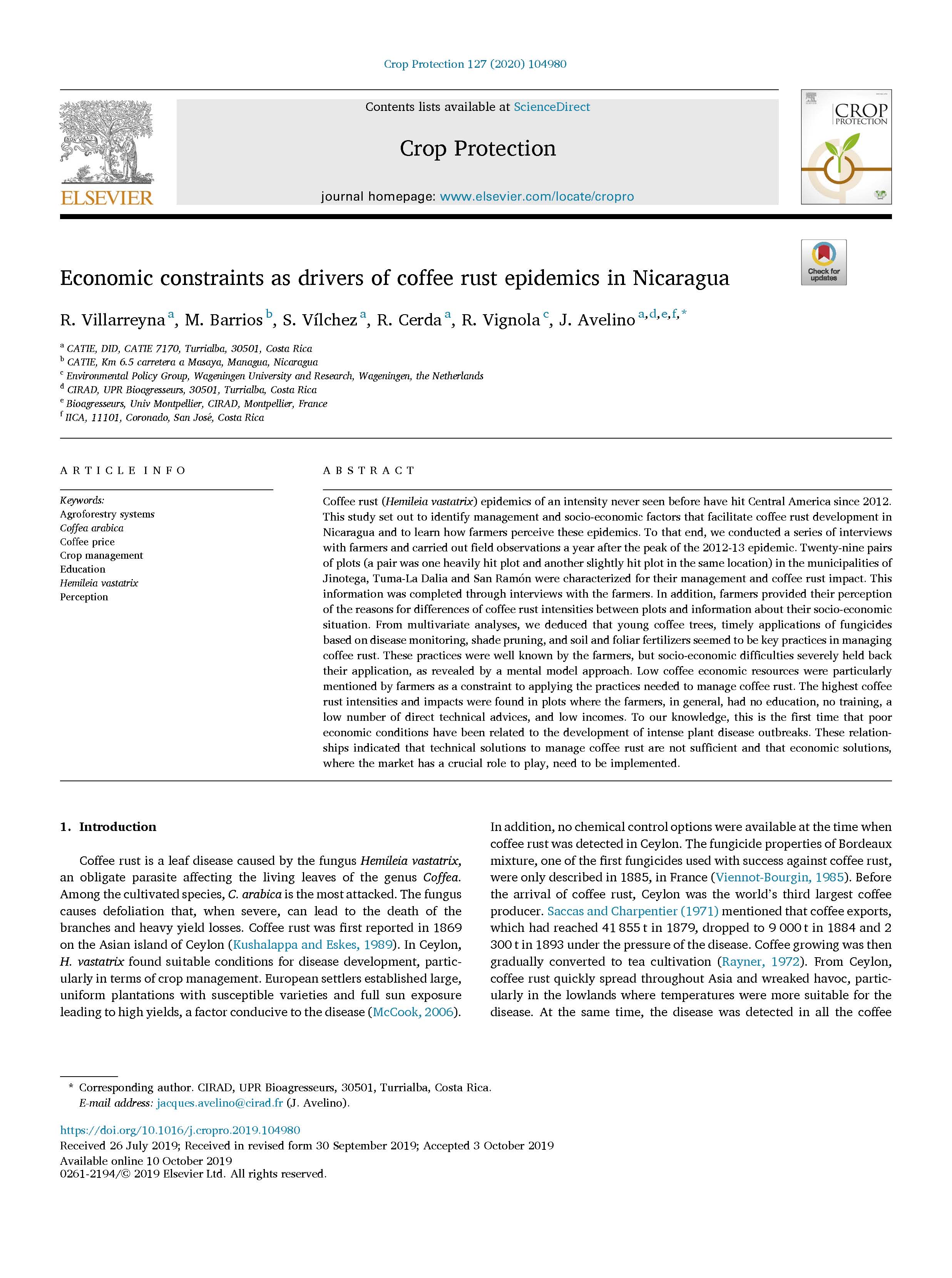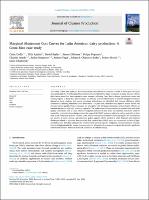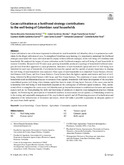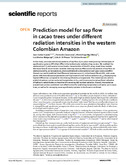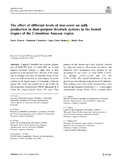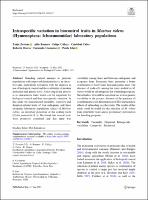Search
Now showing items 1-10 of 161
Transformation of coffee-growing landscapes across Latin America. A review
(CATIE, Turrialba (Costa Rica), 2021-09)
In Latin America, the cultivation of Arabica coffee (Coffea arabica) plays a critical role in rural livelihoods, biodiversity
conservation, and sustainable development. Over the last 20 years, coffee farms and landscapes ...
Dung Beetle Assemblages Attracted to Cow and Horse Dung: The Importance of Mouthpart Traits, Body Size, and Nesting Behavior in the Community Assembly Process
(MDPI, Basel (Switzerland), 2021-08)
Dung beetles use excrement for feeding and reproductive purposes. Although they use a range of dung types, there have been several reports of dung beetles showing a preference for certain feces. However, exactly what ...
Microsatellite DNA fingerprinting of Coffea sp. germplasm conserved in Costa Rica through singleplex and multiplex PCR
(Crop Breeding and Applied Biotechnology, 2020)
A large collection of coffee genetic resources is conserved in Costa Rica. In this study, microsatellite DNA fingerprinting of coffee through singleplex and multiplex PCR approaches coupled with capillary electrophoresis ...
Cacao agroforestry systems improve soil fertility: Comparison of soil properties between forest, cacao agroforestry systems, and pasture in the Colombian Amazon
(Elsevier, Ámsterdam (Países Bajos), 2021-01)
The objective of our work was to evaluate soil quality in different cacao agroforestry systems (AFS) in the Colombian Amazon. We compared soil quality of AFS at the study site with soil quality of two control systems: a ...
Economic constraints as drivers of coffee rust epidemics in Nicaragua
(Elsevier, Ámsterdam (Países Bajos), 2020)
Coffee rust (Hemileia vastatrix) epidemics of an intensity never seen before have hit Central America since 2012.
This study set out to identify management and socio-economic factors that facilitate coffee rust development ...
Marginal Abatement Cost Curves for Latin American dairy production: A Costa Rica case study
(Elsevier, Ámsterdam (Países Bajos), 2021-05)
This study utilises data collected from Costa Rican dairy farmers to conduct a cradle to farm gate Life Cycle Assessment and the first Marginal Abatement Cost Curve (MACC) for dairy production in Latin America. Ninety dairy ...
Cacao cultivation as a livelihood strategy: contributions to the well‑being of Colombian rural households
(Springer, Nueva York (Estados Unidos), 2021-07)
Cacao cultivation is one of the most important livelihoods for rural households in Colombia, where it is promoted as a substitute for the illegal cultivation of coca. To strengthen Colombian cacao farming, it is important ...
Prediction model for sap flow in cacao trees under different radiation intensities in the western Colombian Amazon.
(2021-01)
In this study, we measured diurnal patterns of sap fow (Vs) in cacao trees growing in three types of agroforestry systems (AFs) that difer in the incident solar radiation they receive. We modeled the relationship of Vs ...
The effect of different levels of tree cover on milk production in dual-purpose livestock systems in the humid tropics of the Colombian Amazon region
(Springer, Nueva York (Estados Unidos), 2020)
Abstract Caqueta´, Colombia, has a bovine population of 1,809,702 head, of which 88% are in dual purpose livestock systems; it ranks fifth in milk production at the national level. The aim of this study was to evaluate the ...
Intraspecific variation in biocontrol traits in Mastrus ridens (Hymenoptera: Ichneumonidae) laboratory populations
(Springer, Nueva York (Estados Unidos), 2021-05)
Breeding natural enemies to generate populations with improved characteristics is an attractive idea, particularly nowadays with the increase in use of biological control and the availability of modern molecular and genetic ...


